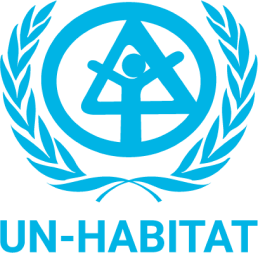June 2021, Hyderabad, India – To mark World Environment Day, the British Deputy High Commission in Hyderabad and UN-Habitat India partnered to arrange a virtual panel discussion “Changing weather trends in Andhra Pradesh and Telangana” on 4 June 2021. The dialogue centred on the recent weather patterns, the impact of climate change on communities, and potential interventions that could be undertaken by decision makers to manage the risk of future extreme weather events.
The panel discussion was part of a dialogue series to raise awareness of climate change following up to the UN Climate Change Conference (COP 26) in Glasgow, Scotland in November.
The panel brought together a diverse group of speakers including representatives from the state governments of Andhra Pradesh and Telangana, located on the Eastern seaboard, and specialised agencies, civil society organizations, weather bloggers and experts from around the world.
India is predicted to face significant challenges to adapt and mitigate the impact of changing weather patterns in urban and rural areas. A report by the Council on Energy, Environment, and Water that found 75 per cent of districts in India, with a population of 683 million people, are categorized as extreme climate hot spots. In addition, 13 out of the 20 world’s most climate vulnerable cities are in India.
For Andhra Pradesh and Telangana global warming could mean more frequent heatwaves like the one in 2015 which resulted in the loss of more than 2500 lives, as well as extreme rainfall events leading to flooding as was the case in Hyderabad in 2020. Another major concern is the reversal in weather patterns as traditionally flood prone districts such as Guntur, Kurnool, and Srikakulum in Andhra Pradesh are now becoming drought prone. Panellist, Dr. G. Sreenivas from the Agricultural Research Institute Hyderabad explained that similar trends were observed in Telangana.”
“Policy coherence between global, regional, national, and local stakeholders is a foundational requirement to deliver the needed transformations toward sustainable and resilient development,” stated Ms. Parul Agarwala, Country Programme Manager, UN-Habitat India. This was echoed by Mr. Adhar Sinha, Special Chief Secretary to Telangana Government and Director General, Environment Protection and Research Institute who highlighted that guiding policies like the Telangana State Action Plan for Climate Change can provide a system-oriented approach to pre-empt and respond to climate disasters at the local level.
Local governments are on the frontline in combating climate change and can be a proactive force in implementing adaptation measures. In Vijayawada, the second most populated city in Andhra Pradesh, 44 per cent of households live in vulnerable areas.

Image Source: Vijayawada Municipal Corporation

Image Source: Vijayawada Municipal Corporation
The city is prone to various disasters like cyclones, floods, rockslide, earthquakes, heatwaves, and fire incidents. The Vijayawada Municipal Corporation (VMC) partnered with UNDP to install an Automatic Early Warning System on the roof of the VMC office building that is linked with the command control system for emergency warning and operations. “Being an urban local body, it is the role of VMC, to not only ensure the efficient municipal service delivery but also provide a safe and healthy environment for residents,” said Ms. Sarada U., Additional Commissioner- Projects, VMC.

Grassroots projects led by civil society organizations in partnership with local communities have also yielded significant impacts in conservation of natural ecosystems. Nature based solutions like the restoration of water bodies and implementation of rainwater harvesting require changes in perception and behaviour of residents. “While the urban local bodies may facilitate the entire process, awareness activities need to be conducted among locals by involving NGOs towards rainwater catchment practices at neighbourhood and household level that includes restoration of traditional wells, rooftop rainwater harvesting, and ground water recharge” said Ms. Kalpana Ramesh, Head of water initiatives from Society for Advancement of Human Endeavour.
Collaborations between research institutes, government partners and private sector have resulted in weather forecasting technologies and programmes that have reduced fatalities and improved disaster preparedness and prevention. Further advancements are being explored with innovations like supercomputers and climate change modelling. Mr. Julian Menadue of the UK Met Office highlighted the Weather and Climate Science for Service Partnership Programme being implemented by the UK Met Office and Ministry of Earth Sciences. He said the aim is “developing partnerships, harnessing scientific expertise to build the basis for strengthening the resilience of vulnerable communities to weather and climate variability.”

Furthermore, effective communication systems to disseminate real time weather updates is extremely crucial, especially for communities whose livelihoods depend upon weather conditions. Social media outlets have proven to be powerful mediums for reaching out to varied groups. This was illustrated by Mr. Sai Praneeth, the ‘Andhra Pradesh Weatherman’ whose weather blog and website found a significant following among rural farmers who use the information to make informed decisions daily. He asserted the need for collating and converting complex information into simple and direct messages geared for micro, regional level in Telugu and English. Such cases exemplify the simple yet effective ways of knowledge transfer and capacity development that could build resilience to climate change.


